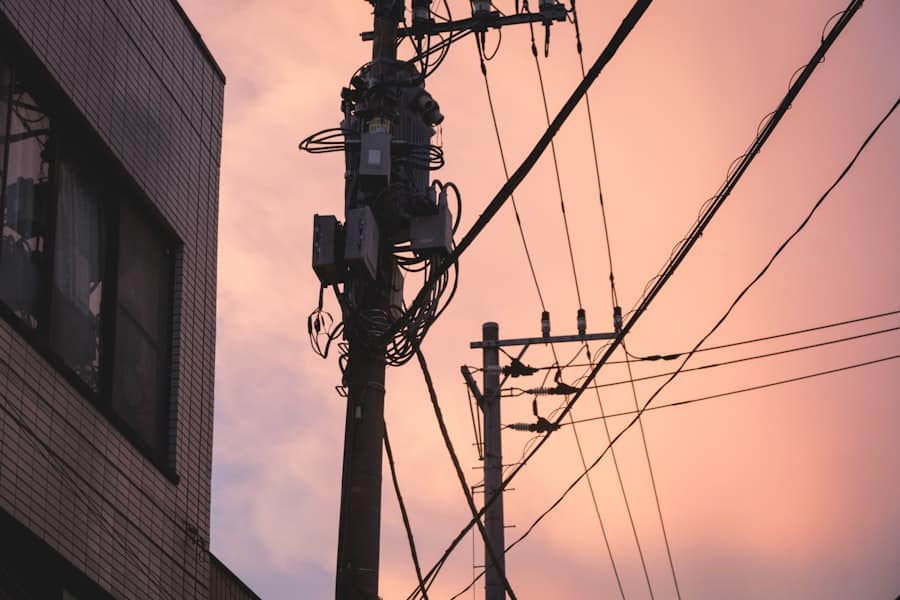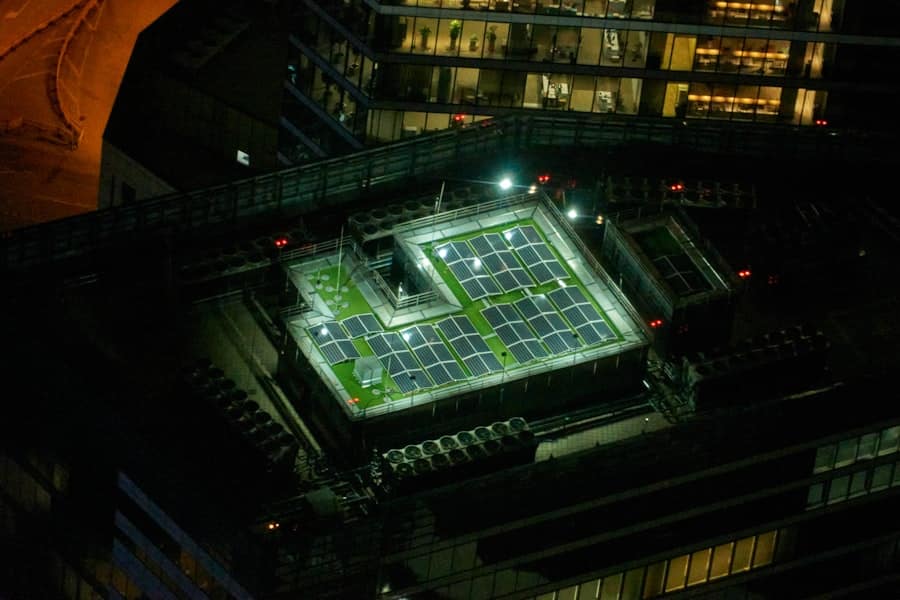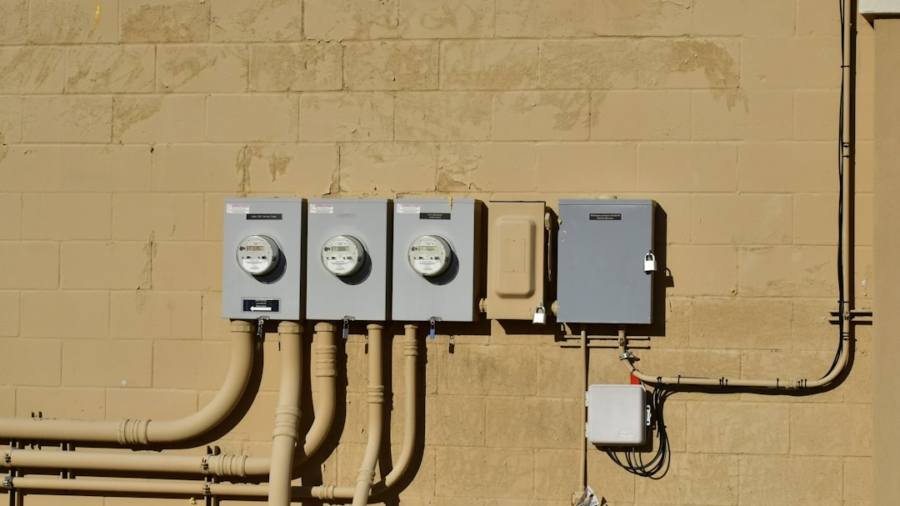The evolution of energy systems has reached a pivotal moment with the advent of smart grids, which represent a significant leap forward in the way electricity is generated, distributed, and consumed. Unlike traditional power grids, which rely on a one-way flow of electricity from centralized power plants to consumers, smart grids utilize advanced digital technology to create a two-way communication system. This transformation allows for real-time monitoring and management of energy resources, enhancing the efficiency and reliability of electricity supply.
Smart grids integrate various technologies, including sensors, smart meters, and automated control systems, to optimize the performance of the electrical grid. The integration of smart grids is particularly crucial in the context of renewable energy sources such as solar and wind power. As these energy sources become more prevalent, the need for a flexible and responsive grid system becomes increasingly apparent.
Smart grids facilitate the incorporation of distributed energy resources (DERs), enabling consumers to not only consume energy but also generate and sell it back to the grid. This shift towards a more decentralized energy model empowers consumers and promotes sustainability, making smart grids an essential component of modern energy infrastructure.
Key Takeaways
- Smart grids are modern electricity networks that use digital technology to monitor and manage the transport of electricity from all generation sources to meet the varying electricity demands of end-users.
- Integrating renewable energy sources into the grid can lead to reduced greenhouse gas emissions, energy independence, and lower electricity costs for consumers.
- Challenges of renewable energy integration include intermittency, variability, and the need for grid flexibility to accommodate the fluctuating nature of renewable energy sources.
- Smart grids play a crucial role in integrating renewable energy by enabling real-time monitoring, control, and communication between various grid components and renewable energy sources.
- Smart grid technologies such as advanced metering infrastructure, energy storage systems, and demand response programs are essential for effectively integrating renewable energy into the grid and ensuring grid stability and reliability.
Benefits of Renewable Energy Integration
The integration of renewable energy into the power grid offers numerous benefits that extend beyond environmental considerations. One of the most significant advantages is the reduction in greenhouse gas emissions. By replacing fossil fuel-based power generation with clean energy sources, such as solar, wind, and hydroelectric power, countries can significantly lower their carbon footprints.
This transition is vital in combating climate change and promoting public health by reducing air pollution associated with conventional energy sources. Moreover, renewable energy integration enhances energy security and resilience. By diversifying the energy supply with locally sourced renewable resources, countries can reduce their dependence on imported fossil fuels, which are subject to volatile market fluctuations and geopolitical tensions.
This diversification not only stabilizes energy prices but also strengthens national security by minimizing vulnerabilities associated with energy supply disruptions. Additionally, renewable energy sources are often abundant and inexhaustible, providing a sustainable solution to meet growing energy demands.
Challenges of Renewable Energy Integration

Despite the clear benefits of integrating renewable energy into the grid, several challenges must be addressed to realize its full potential. One of the primary obstacles is the intermittent nature of renewable energy sources. Solar and wind power generation can fluctuate significantly based on weather conditions and time of day, leading to potential mismatches between supply and demand.
This variability can create challenges for grid operators in maintaining a stable and reliable electricity supply. Another significant challenge is the existing infrastructure’s limitations. Many power grids were designed for centralized generation and may not be equipped to handle the complexities introduced by distributed energy resources.
Upgrading aging infrastructure to accommodate new technologies and ensure interoperability between different systems can be costly and time-consuming. Additionally, regulatory frameworks may not yet be fully aligned with the needs of a modernized grid, creating barriers to investment and innovation in renewable energy integration.
Role of Smart Grids in Renewable Energy Integration
Smart grids play a crucial role in overcoming the challenges associated with renewable energy integration by providing the necessary tools for real-time monitoring, control, and optimization of energy resources. Through advanced communication technologies, smart grids enable grid operators to manage the variability of renewable energy sources effectively. For instance, demand response programs can be implemented to adjust consumer electricity usage during peak periods or when renewable generation is low, thereby balancing supply and demand.
Furthermore, smart grids facilitate the deployment of energy storage solutions, which are essential for mitigating the intermittency of renewable energy sources. By storing excess energy generated during peak production times and releasing it during periods of high demand or low generation, storage systems enhance grid stability and reliability. This capability not only supports the integration of renewables but also provides ancillary services that contribute to overall grid resilience.
Smart Grid Technologies for Renewable Energy Integration
A variety of technologies underpin smart grids, each contributing to the effective integration of renewable energy sources into the electrical system. Smart meters are one such technology that enables real-time data collection on electricity consumption patterns. By providing consumers with detailed information about their energy usage, smart meters encourage more efficient consumption behaviors and facilitate participation in demand response programs.
Another critical technology is advanced distribution management systems (ADMS), which allow for real-time monitoring and control of distribution networks. These systems can analyze data from various sources to optimize grid operations, manage distributed generation resources, and enhance fault detection capabilities. Additionally, microgrid technology enables localized control over small-scale power systems that can operate independently or in conjunction with the main grid.
Microgrids are particularly valuable in integrating renewable resources at a community level while enhancing resilience against outages.
Case Studies of Successful Renewable Energy Integration with Smart Grids

Several case studies around the world illustrate the successful integration of renewable energy into smart grids, showcasing innovative approaches and tangible results. One notable example is Germany’s Energiewende initiative, which aims to transition to a sustainable energy system by increasing the share of renewables in electricity generation. The country has invested heavily in smart grid technologies that facilitate the integration of wind and solar power while ensuring grid stability through advanced forecasting tools and demand-side management strategies.
In California, the deployment of smart grid technologies has enabled significant advancements in renewable energy integration. The California Independent System Operator (CAISO) has implemented a comprehensive suite of tools for managing variable renewable resources, including real-time data analytics and automated control systems. As a result, California has successfully integrated large amounts of solar power into its grid while maintaining reliability during peak demand periods.
Policy and Regulatory Support for Smart Grids and Renewable Energy Integration
Effective policy and regulatory frameworks are essential for fostering the development and deployment of smart grids and facilitating renewable energy integration. Governments play a critical role in establishing incentives for investment in smart grid technologies and renewable energy projects. For instance, tax credits, grants, and subsidies can encourage utilities and private investors to adopt innovative solutions that enhance grid resilience and promote sustainability.
Moreover, regulatory bodies must adapt existing frameworks to accommodate new business models emerging from smart grid technologies.
Policymakers must also prioritize research and development initiatives that drive innovation in smart grid technologies while addressing concerns related to cybersecurity and data privacy.
Future Outlook for Smart Grids and Renewable Energy Integration
The future outlook for smart grids and renewable energy integration is promising as technological advancements continue to evolve alongside growing public awareness of climate change issues. The increasing affordability of renewable technologies, such as solar panels and wind turbines, combined with advancements in battery storage solutions, will further accelerate the transition towards a more sustainable energy landscape. As electric vehicles (EVs) become more prevalent, they will also play a significant role in shaping future smart grids.
EVs can serve as mobile storage units that help balance supply and demand on the grid while providing additional revenue streams for consumers through vehicle-to-grid (V2G) technology. This symbiotic relationship between transportation electrification and smart grid development will enhance overall system efficiency. In conclusion, as nations strive to meet ambitious climate goals while ensuring reliable electricity supply, the integration of smart grids with renewable energy sources will be paramount.
The ongoing collaboration between governments, utilities, technology providers, and consumers will shape a resilient energy future that prioritizes sustainability while addressing the challenges posed by climate change.
In the context of advancing technologies, smart grids play a crucial role in supporting renewable energy integration by enhancing the efficiency and reliability of power distribution. These grids utilize digital communication technology to detect and react to local changes in usage, which is essential for managing the variable nature of renewable energy sources like wind and solar power. For those interested in exploring how technology can be tailored to specific needs, such as choosing the right devices for educational purposes, you might find the article on com/how-to-choose-laptop-for-students/’>how to choose a laptop for students insightful.
This article provides guidance on selecting technology that meets the demands of modern education, paralleling the way smart grids are tailored to meet the demands of modern energy consumption.
FAQs
What is a smart grid?
A smart grid is an advanced electricity network that uses digital technology to monitor and manage the transport of electricity from power plants to consumers. It allows for two-way communication between the power provider and the consumer, enabling more efficient and sustainable energy use.
How do smart grids support renewable energy integration?
Smart grids support renewable energy integration by enabling better management and integration of variable energy sources such as wind and solar power. They can dynamically adjust to changes in energy production and demand, helping to balance the grid and maximize the use of renewable energy.
What are the benefits of smart grids for renewable energy integration?
The benefits of smart grids for renewable energy integration include improved grid reliability, reduced energy waste, lower greenhouse gas emissions, and increased flexibility in managing energy supply and demand. Smart grids also enable the integration of distributed energy resources, such as rooftop solar panels and energy storage systems.
How do smart grids help with grid stability and reliability when integrating renewable energy?
Smart grids help with grid stability and reliability when integrating renewable energy by providing real-time monitoring and control of the grid. This allows for better management of fluctuations in renewable energy production and helps to prevent disruptions in the supply of electricity to consumers.
What role do smart meters play in supporting renewable energy integration?
Smart meters play a crucial role in supporting renewable energy integration by providing detailed information on energy consumption and enabling time-of-use pricing. This helps to incentivize consumers to use energy when renewable sources are most abundant, and it also allows for better management of energy demand on the grid.

